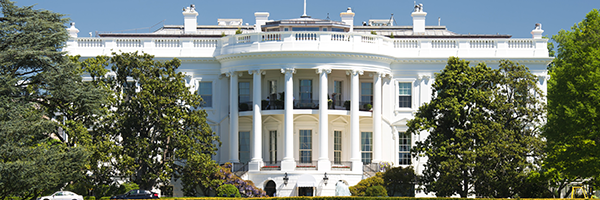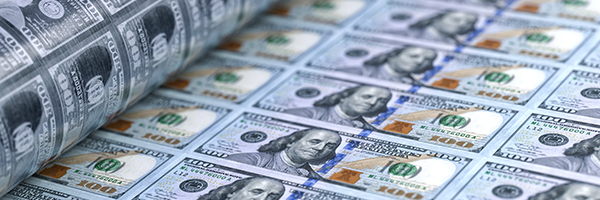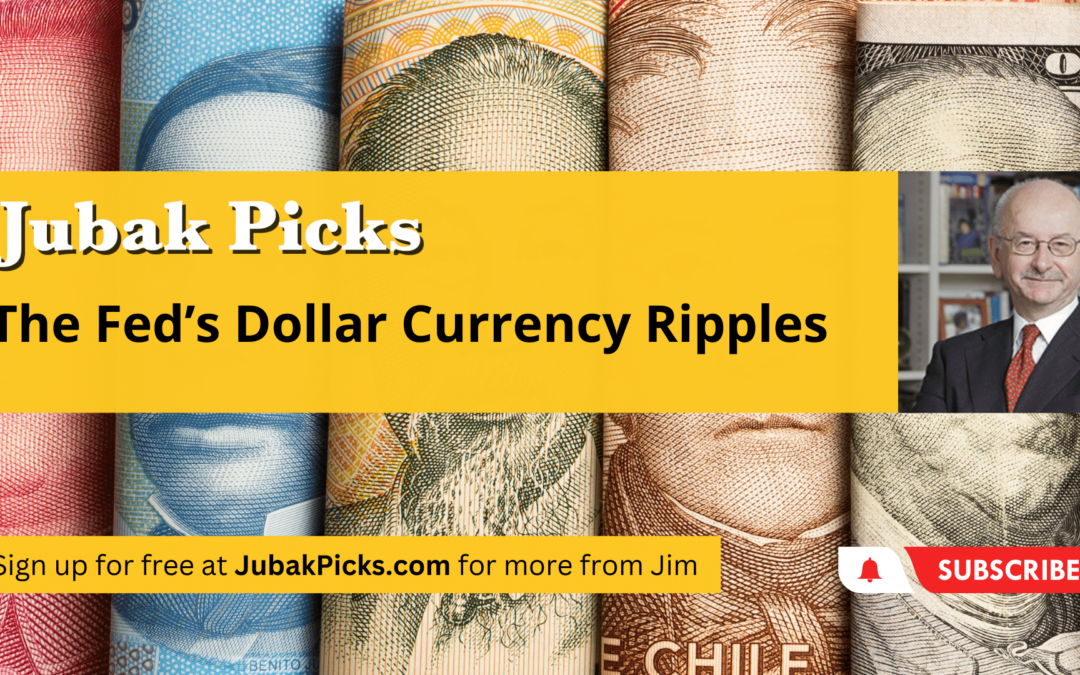
September 30, 2024 | Daily JAM, Mid Term, Special Reports |
I don’t know which candidate will win the election. Right now the polls are within the margin of error on the national level–and even tighter in the seven battleground states that will likely decide the electionm. But I do know the results on November 5 will move stocks. Some right off the bat even before the results are certified. Ans more significantly as a new administration clarifies its policy views and takes office.The results will move the stock market in general
And they will move individual stocks and sectors in particular.

September 16, 2024 | Daily JAM, Long Term, Morning Briefing, NVDA, Volatility |
I think of Nvidia (NVDA) as this market’s warning indicator; it’s the canary in a coal mine; the bird that will die first if dangerous gases start to build up. So, yes, it’s important that Nvidia shares plunged from $134.91 on July 10 to $98.91 on August 7. And again from $128.83 on August 28 to $102.83 on September 6. But the shares are up again–15.83% last week–to $116.78 This canary seems to be sending a rather more complicated message than “Look I’m dead! See my feet in the air?” What’s the message, though?

July 23, 2024 | Daily JAM, Morning Briefing |
On Monday, July 22, the People’s Bank of China lowered its benchmark lending rates and an important short-term policy rate.
The precise timing was a surprise although leaders at the recently concluded third plenum had flagged continuing problems in the real estate sector and soft consumer demand. This is a hugely important change in policy for the People’s Bank, which had recently shied away from cutting rates in an effort to prevent further erosion in the yuan versus the U.S. dollar, and to lower inflation caused by higher prices for imports. The move, I think, signals the hugh level of anxiety in the Beijing leadership at the economy’s refusal to respond to previous stimulus moves.

June 15, 2024 | Daily JAM |
This is Giorgia Meloni’s time in the sun. I hope she enjoys it. The pasta is about to hit the fan. Which will lead the dollar to rally against the euro. Some more. And which gives me Step #6 in my Special Report: 7 Steps to Take Now to Protect Your Portfolio While You Still Reap Market Gains Step #6 in my strategy for protection and profit for the rest of 2024 is Buy the Invesco DB US Dollar Bullish ETF (UUP).

April 14, 2024 | Daily JAM, Short Term |
After Israel and its allies (with the help of some Arab states that don’t want to see a wider Middle East war and who aren’t thrilled with the growing power of Iran and its proxies) succeeded in shooting down almost all of the drones (170), ballistic missiles (120), and cruise missiles (30) launched by Iran against the country, will the two sides both declare victory and claim that honor is satisfied or will one or the other escalate the war with another round of attacks? As of early Monday trading in Asia, the oil and gold markets have reacted with concern but not panic. Gold, up 13% already this year to a record above $2,400 an ounce, moved higher but the gains were relatively modest. Spot gold climbed 0.8% to $2,361.92 an ounce as of 6:20 a.m.in Singapore. The global oil market opened to the upside but by less than 1%. And prices have been steady to slightly weaker since then.

September 26, 2023 | AAPL, ADBE, ALB, AMAT, EUM, GOLD, LAC, Morning Briefing, MSFT, NVDA, PILBF, RWM, SCCO, Short Term, Special Reports, UUP, Volatility |
So what do you do with your portfolio for the rest of 2023? And what’s your best strategy to be prepared for 2024? In Part 1 of this Special Report I laid out the 10 developments that I thought would drive the financial markets for the rest of 223 and into 2024. Today, in Part 2, I’m going to give you the first 2 of 10 moves to take–with as much detail and as many specifics as possible–that you should be making now to position your portfolio for the uncertainties of the last quarter of 2023.

September 7, 2023 | Daily JAM, Morning Briefing |
Oh, boy, something to look forward to. The Senate returned to session on September 5 and the House will follow on September 12. And a new government shutdown looms. (This is different than the threat of a default on U.S. government debt that was averted by a last-minute deal to raise the debt ceiling. This time the government and agencies such as the Federal Aviation Administration and the Department of Agriculture would simply hang closed signs on their doors until Congress appropirated money for operations.)
The timing has a good likelihod of disrupting a clear trend in the financial markets.

August 17, 2023 | Daily JAM, Videos |
Today’s video is The Fed’s Dollar Currency Ripples. Monday, August 14 was a big day in the currency market with the currencies of China, Argentina, and Russia all making headlines. China’s yuan fell to its lowest level against the dollar since November. The Argentine peso collapsed as the government looks like it is losing its fight against inflation. The Argentine government raised rates by 21 percentage points to 118% and devalued the peso by another 18%. This immediate cause of the drop in the Peso was a surprise victory by a libertarian in a recent primary race for president. Argentine debt due in 2046 fell $0.04 to $0.28 on the dollar. Russia had an emergency rate increase of 350 basis points to a benchmark interest rate of 12%. Of course, none of these things are solely attributable to the dollar’s strength. China’s economy is slowing, Argentina is dealing with economic chaos, and Russia is feeling the effects of international sanctions due to the war in Ukraine. But, the dollar is very strong because it’s safe. The U.S. economy is showing surprising signs of growth with inflation going down and interest rates expected to remain high for some time. The popularity of the dollar in currency markets is creating big economic ripples. China, Argentina, and Russia are the tip of a very large iceberg. The World Bank and IMF say that 40% of the world’s poorest countries are on the verge of default. It’s time to watch your dollars, yuan, pesos, and developing country currencies closely.

January 31, 2023 | Daily JAM, Videos |
Today I posted my two-hundred-and-thirtieth YouTube video: Trend of the Week Watch the Yuan. This week’s Trend of the Week: Watch the Yuan. China controls one of the two largest treasury portfolios in the world, and the strength of the yuan affects treasuries worldwide. Right now, the yuan is under pressure from many different sources that I’m not sure the market is taking into account. China’s battle with high rates of COVID has left the Chinese government with two choices: either let the yuan fall and import inflation, or spend money to support the yuan causing inflation problems on the other end. It’s clear to me that China will provide stimulus to counteract the slowing economy from the COVID outbreak, which will put added pressure on the yuan. Additionally, as Russia tries to make up for losses in its oil exports, it really only has one option: sell from its huge currency reserve. Due to global sanctions, the only currency it can trade is the yuan. Expect to see Russia selling off its yuan to buy rubles in order to support its own currency. All these factors are putting pressure on the yuan. There’s a lot to watch in global currencies right now, including strange things happening with the yen in Japan and the dollar under pressure as the U.S. faces the debt ceiling crisis. Keep an eye on the Treasury market.

January 30, 2023 | Daily JAM, GDX, GDXJ, GLD, GOLD, Jubak Picks, Perfect Five-ETFs, Volatility |
With the Federal Reserve seemingly winding down its cycle of interest rate increases, a stronger dollar is no longer the big currency market story. Gold is. Gold is back. And for at least the next 3 to 6 months.

January 25, 2023 | Daily JAM, Videos |
Today I posted my two-hundred-and-twenty-eighth YouTube video: Don’t Pay for the Illusion of Control. Today’s topic is: Don’t Pay for the Illusion of Control. The market is rallying on the expectation that the Fed will reduce its interest rate increases to just 25 basis points on February 1, after the previous hike of 50 basis points. The belief is that the Fed will continue to wind down rate increases until they eventually stop after having vanquished inflation without tanking the economy. I have a few concerns about this rally. The market has priced this as 100% likely, so if the Fed disappoints with another 50 basis point increase, the market will not react well. Another huge problem with the idea that the Fed is controlling the market is this: there is no controlling this economy. Fed rates are just one of the factors in a very complicated economic picture right now. Here is a sample of some of the other things that can and will affect the market: as the Fed has reduced its balance sheet (and therefore reduced its supply of treasuries), the debt ceiling crisis has resulted in a lower supply of treasuries from the Treasury, and banks are moving their money to reserves, while money market funds are looking to buy bonds and there are none to be found. On a global scale, China’s battle with COVID could cause as many as one million deaths and slow that economy, while Beijing pours money into its financial system. Japan has seen an unusual surge in inflation and the fighting in Ukraine will likely get worse this spring as Russia looks to regain control of the war. All this to say, the Fed does not control the economy and I wouldn’t put all my eggs in the Fed basket.

January 19, 2023 | Daily JAM, Perfect Five-ETFs, Videos, Volatility |
Today I posted my two-hundred-and-twenty-sixth YouTube video: Quick Pick Sell UUP. This week’s Quick Pick: Sell UUP–the dollar ETF. I had the Invesco DB US Dollar Index Bullish Fund (NYSEARCA: UUP) in my portfolio through 2022 while the dollar was doing well but the dollar has recently taken a turn South and I’m now saying: Sell. UUP was going up while expectations were that the Fed was going to continue to raise interest rates, but now that the market believes (rightly or wrongly) that the Fed will be slowing their rate hikes, we’ve seen it move down by about 1.22% for 2023. This will likely continue to be the case as other countries maintain steady interest rates or even raise them to fight inflation (Watch the European Union) and as we edge closer to the debt ceiling cliff. U.S. Secretary of the Treasury, Janet Yellen thinks the government can shift things to cover us through June, but after that, if the debt ceiling isn’t raised by Congress, the United States will not be able to borrow enough money to meet all of its obligations. I think we’ll walk right up to that cliff, but I sincerely hope we don’t go over it. For now, I’m selling UUP and I’ll be looking for a gold ETF to replace it. More on that to come!















